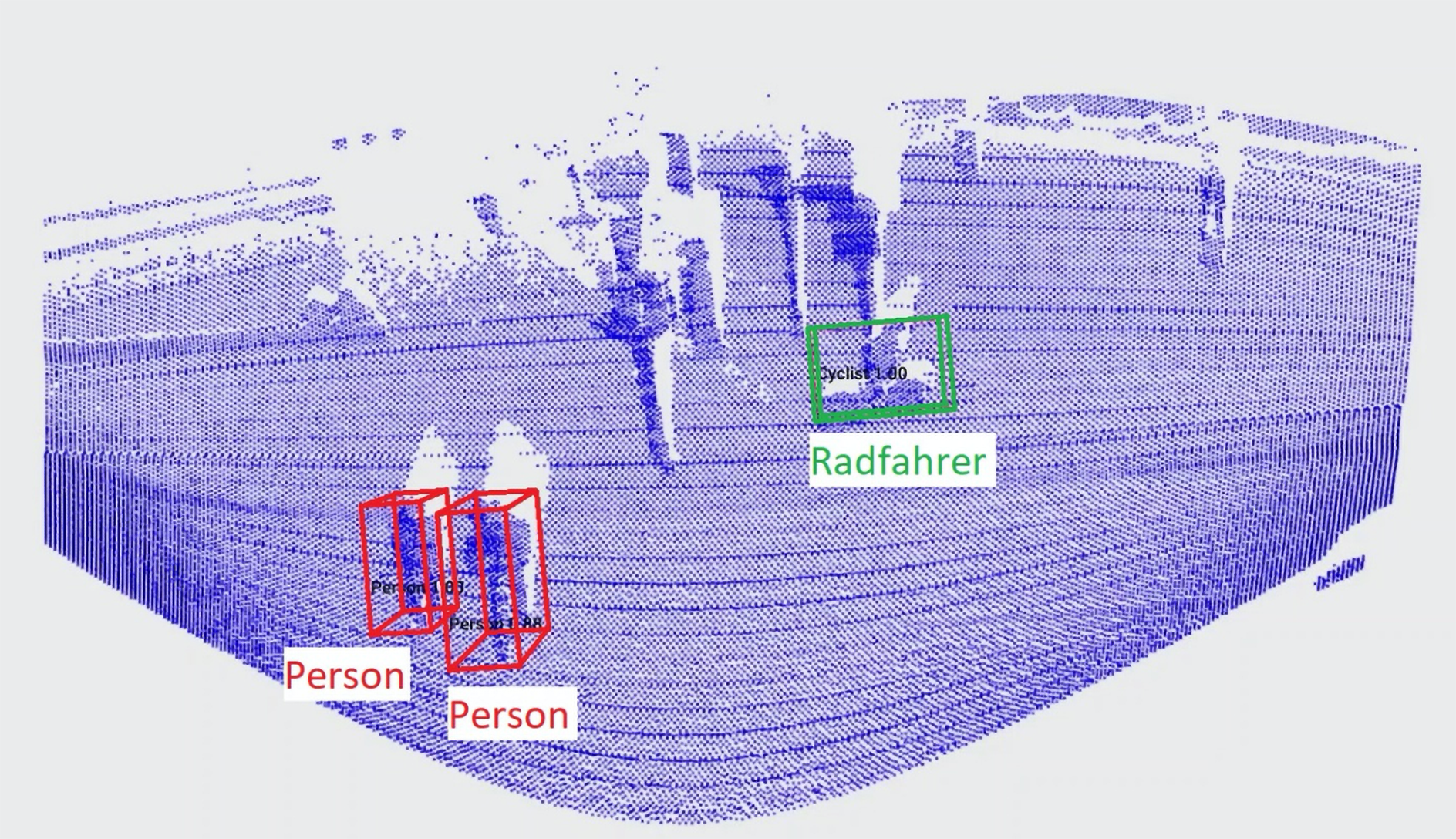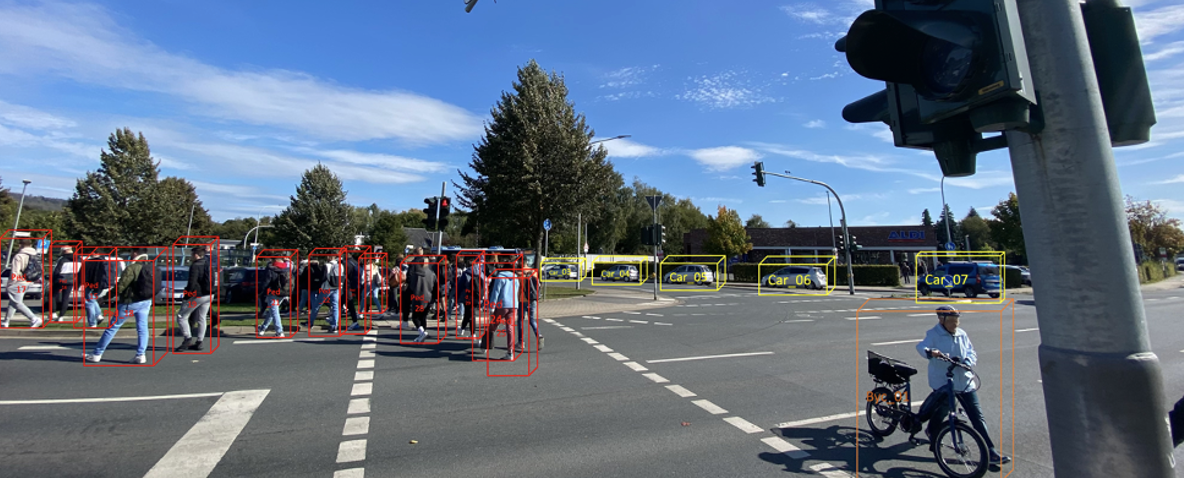
Embedded Computer Vision

Image and point cloud data represent the environment in the form of 2- or 3-dimensional data. For example, color cameras generate visual (visible to humans) 2D color images, thermal imaging cameras capture thermal signatures in the environment (see Figure 2) and 3D LiDAR sensors use laser beams to scan their environment in the form of 3D point clouds (see Figure 1).
It is often very easy for a person to extract higher-value information from this rich image and point cloud data and thus generate added value. However, this is very time-consuming and costly and requires expert knowledge. We support the automation of this task using state-of-the-art computer vision processes to enable innovative applications and thus save you costs and valuable staff time in the medium term. For example, we use 2D colour images to automatically assess the quality in production, reveal Energy potential in systems using thermal images and detect pedestrians in compliance with GDPR for optimized traffic light circuits in our cities of tomorrow.
The focus of our services is on the two application areas Smart Factoryand Smart City.
Our goal:
Automation of tasks using a combination of cameras (or camera-like sensors) and modern computer vision processes in the fields of industry (e.g. visual quality control) and smart cities (e.g. environmental monitoring)
Our service offer:
- Potential and feasibility analyses for the integration of systems for the automatic evaluation of image or point cloud data in your company or city
- Conceptual design of systems for image or point cloud analysis
- Implementation of the algorithms on different hardware platforms, e.g. embedded hardware for edge computing
- Training your employees on the topic of "AI-based optical quality control"
- Participation as an application-oriented research partner in research and development projects in the consortium with a focus on computer vision for embedded hardware
Core benefits of exemplary applications:
References / Publications:
- Sprute, Dennis; Hufen, Florian; Westerhold, Tim; Flatt, Holger: 3D-LiDAR-based Pedestrian Detection for Demand-Oriented Traffic Light Control. In: IEEE 21st International Conference on Industrial Informatics (INDIN), 2023
- Sprute, Dennis; Westerhold, Tim; Hufen, Florian; Flatt, Holger; Gellert; Florian: DSGVO-konforme Personendetektion in 3D-LiDAR-Daten mittels Deep Learning Verfahren. In: Bildverarbeitung in der Automation (BVAu), Nov 2022
- Gutknecht-Stöhr, M.; Friesen, A.; Flatt, H.; Habeck, T.; Großehagenbrock, J.: Automatisierte Qualitätskontrolle: Kartoffeln, KI und Roboter. Atp magazin 10/2019, S. 72 ff, 2019
 Industrial Automation branch INA
Industrial Automation branch INA 

